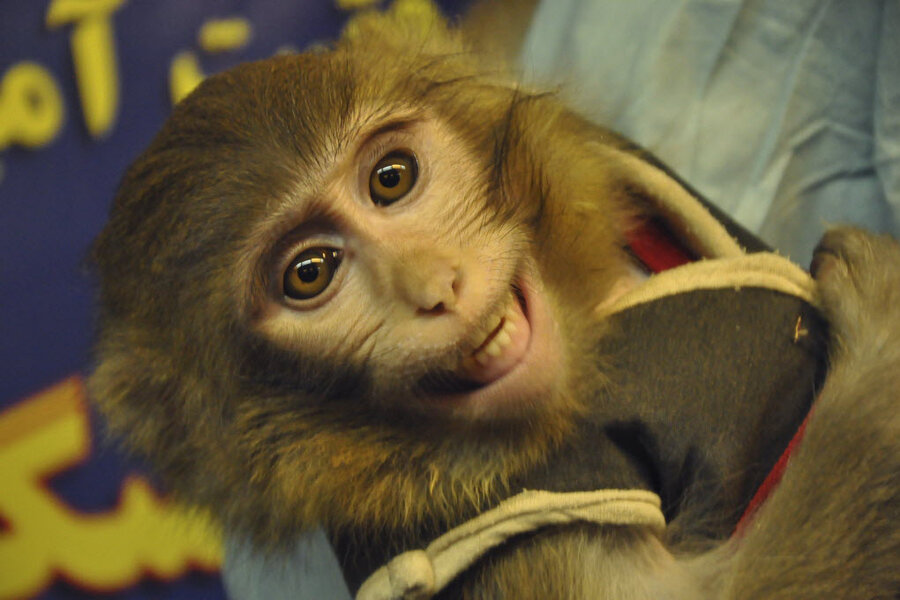President Rouhani cheers return of Iran’s second monkey-astronaut
| Jerusalem
Iran’s President Hassan Rouhani has a lot on his plate these days, not least of all the world’s focus on Iran’s nuclear program.
But he still managed to find time to tweet not once but three times about Iran’s successful second launch of a monkey into space. After noting that the monkey had returned "safe and sound," he tweeted:
International media noted reports of the monkey launch with both skepticism and concern, as some doubt the veracity of Iran’s purported technological feats and others worry that the space program may be used as cover for developing long-range missiles.
The second monkey launch – which used liquid fuel, allowing for a slower, safer journey – was impossible to independently verify, and state media did not make clear when the event took place. Official photos of the first alleged monkey astronaut in January 2013, which traveled in a faster rocket powered by solid fuel, featured two different monkeys, raising questions about whether the primate had died in space. Iranian officials admitted the mistake, the Associated Press reported at the time.
Iranian officials later said one set of pictures showed an archive photo of one of the alternate monkeys. They said three to five monkeys are simultaneously tested for such a flight, and two or three are chosen for the launch. Finally, the one that is best suited for the mission is chosen for the voyage.
The male rhesus macaque monkey used in the most recent launch weighed 3 kilograms (6.6 pounds). Iran’s state news agency said the next launch will feature a larger animal, with the eventual goal of being able to send people into space within five to eight years.
"The launch of [the rocket] Pajohesh is another long step getting the Islamic Republic of Iran closer to sending a man into space," the official IRNA news agency said.
Western officials have raised concerns that such a program could enable Iran to develop long-range missile capabilities. Experts interviewed by the New York Times at the time of the first launch said it didn’t represent “any militarily significant technology” – yet.
James E. Oberg, a former NASA engineer and author of a dozen books on human spaceflight, said Iran’s civil space advances also had propaganda value, since the peaceful flights could take global attention off the nation’s military feats and ambitions.
“To a large degree, it’s a fig leaf,” he said in an interview. “Like the North Koreans, they get to present their program as peaceful when lots of it has to do with weapons development.”
For decades, space powers have lofted ants, spiders, mice, rats, frogs, snails, fish, turtles, guinea pigs, cats, dogs, monkeys and chimpanzees as cover stories for military programs and as high-flying experiments meant to pave the way for sending humans into orbit. Iran in recent years has said it has launched a mouse, a turtle and a number of worms.
If President Rouhani has anything to say about it, more animals should follow soon, a post on his website suggests. “The president also congratulated the supreme leader of the Islamic revolution Ayatollah Ali Khamenei and the Iranian nation on the significant achievement. He wished further success for the Iranian experts."







